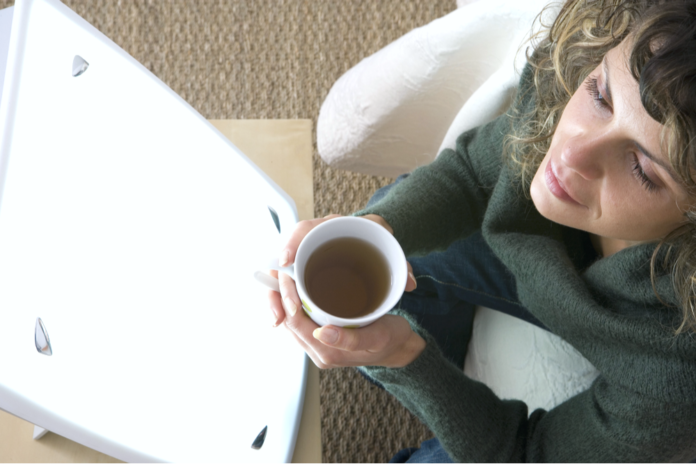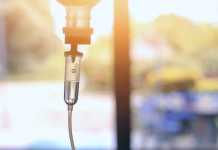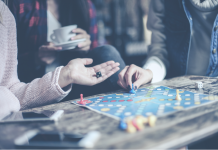Up to five percent of U.S. adults experience SAD, otherwise known as seasonal affective disorder or winter depression. Now referred to as major depressive disorder with a seasonal pattern, it induces the same symptoms and mood changes as depression.
Thankfully, it can be treated in multiple ways like medication, talk therapy, and light therapy or a combination of those.
This article shines light on the science and advantages of incorporating light therapy lamps. So, read on for a deeper dive on the wellness habit and if it is a viable treatment option for SAD.
What Is Seasonal Affective Disorder?
Experienced most often December through February, SAD is a mental illness linked to a biochemical imbalance in the brain. This type of depression is spurred by shorter daylight hours and less sunlight during the winter months.
Evidently, when seasons change so too do biological clocks known as the circadian rhythm. Since the circadian rhythm plays a major role in hormone regulation, this shift in weather can lead to symptoms of major depressive disorder. These include:
- Feeling overwhelmingly sad
- Loss of interest in normal hobbies and activities
- Changes in appetite and increased cravings for carbs
- Shifts in sleeping patterns
- Loss of energy and/or increased lethargy even if sleeping more
- Irritability or slowed movements
- Feelings of worthlessness
- Difficulty concentrating or making decisions
- Thoughts of suicide or harming oneself
Frequently treated with medication and cognitive behavioral therapy, light therapy is an equally effective treatment. Furthermore, symptoms usually subside come spring.
What Is Light Therapy?
Essentially mimicking spending time in natural sunlight, light therapy involves sitting near a light therapy box that emits bright light but filters harmful ultraviolet (UV) rays. People normally partake first thing in the morning for at least 20 minutes or longer. They also usually feel improvement from symptoms within one or two weeks of treatment.
As of now, professionals indicate light therapy can be as effective as traditional antidepressant medication. However, it’s not appropriate for everyone including:
- Those intolerant of bright light
- Some people with bipolar disorder as it can induce mania
- People with diabetes who have retina damage
- Anyone with pre-existing eye diseases
Researchers continue to improve light therapy and are currently trying to create light boxes that stimulate dawn and sunrise. They also gradually increase in intensity from darkness to different luxes to simulate the different times of day.
In addition, they are experimenting with using lower intensity blue light because it elicits a more powerful effect on the retina than white light.
What Are SAD Lamps?
SAD lamps are simply the light therapy boxes discussed above. They replicate natural daylight to provide relief and reduce symptoms of seasonal affective disorder.
There are many different versions with different settings and intensities, and therefore effectiveness.
Features to look for when choosing a suitable lamp include:
- Surface area: larger areas produce larger lux and require less time to use
- Price: often ranges from $40 to hundreds of dollars
- Specs: 10,000 lux of cool, white fluorescent light is standard
- Projection of light: downward motion ensures there will be no glare
- Lampstand: adjustable ones ensure comfortability
- Bulbs: certain fluorescent one can last 7 years or more
- Brightness levels: some feature more than one setting
- Light spectrum: full spectrum is best
- Portability: some can be easily transported while others are static
- Safety: SAD lamps are not regulated by the FDA, so beware of ones that only treat skin conditions
The Science Behind the Therapy
Basically, light therapy affects brain chemicals (serotonin) linked to mood, light sensitivity, and sleep regulation that ease symptoms of SAD. For it to be most effective, the light from the box or lamp must indirectly enter the eyes as exposing only skin doesn’t elicit the same therapeutic effect.
Moreover, the light stimulates specific cells in the retina of the eye that connect to the part of the brain that controls the circadian rhythm known as the hypothalamus. When the hypothalamus is activated around the same time every day, normal circadian rhythms can return. Symptoms tend to subside or lessen at the least.
To avoid harmful ultraviolet light, look for light boxes that emit 10,000 lux, a measure of light intensity. For reference, an ultra sunny day emits about 50,000 lux.
In addition to treating SAD, light therapy is also implicated in helping manage jet lag, dementia, and some sleep disorders. And although more research is warranted, light therapy may benefit the average person because of its positive benefits on circadian rhythm. Watch out for this to become a common wellness practice among the collective!
The Takeaway
SAD, now referred to as major depressive disorder with a seasonal pattern, is a condition related to the colder seasons and less exposure to sunlight. It elicits symptoms similar to major depressive disorder such as increased fatigue and frequent melancholy moods.
Along with or in place of medication and therapy, SAD or light therapy lamps can mitigate those winter blues and bolster mental health. The bright light therapy helps the brain produce more happy hormones and target the hypothalamus to regulate the circadian rhythm.
While there are many different versions, the surface area, lux settings, and projection of light are the most important features to consider.
Finally, stay tuned for new and improved versions with varying intensities and forms of blue light!
References:
Mayoclinic Staff. Light Therapy. Mayo Clinic, Mayo Foundation for Medical Education and Research. Published February 8, 2017. www.mayoclinic.org/tests-procedures/light-therapy/about/pac-20384604.
Michael M. Seasonal Affective Disorder: Bring on the Light. Harvard Health Blog. Published June 5, 2020. www.health.harvard.edu/blog/seasonal-affective-disorder-bring-on-the-light-201212215663.
Sullivan D. 5 Best SAD Lamps for Seasonal Affective Disorder – Healthline. Published January 26, 2021. www.healthline.com/health/sad-lamp.
Torres F. Seasonal Affective Disorder (SAD). Published October 2020. www.psychiatry.org/patients-families/depression/seasonal-affective-disorder#:~:text=About%205%20percent%20of%20adults,common%20among%20women%20than%20men.









